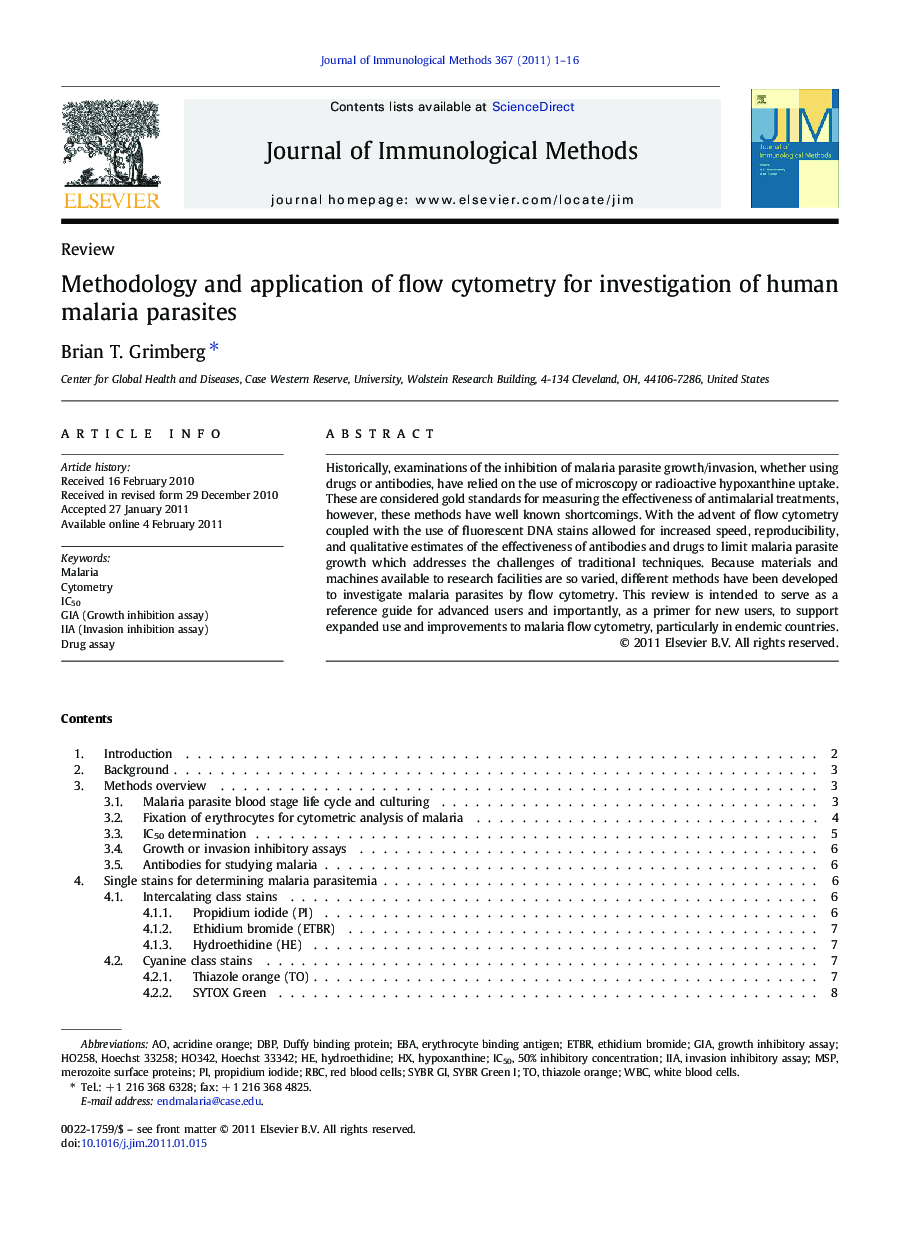| Article ID | Journal | Published Year | Pages | File Type |
|---|---|---|---|---|
| 8419551 | Journal of Immunological Methods | 2011 | 16 Pages |
Abstract
Historically, examinations of the inhibition of malaria parasite growth/invasion, whether using drugs or antibodies, have relied on the use of microscopy or radioactive hypoxanthine uptake. These are considered gold standards for measuring the effectiveness of antimalarial treatments, however, these methods have well known shortcomings. With the advent of flow cytometry coupled with the use of fluorescent DNA stains allowed for increased speed, reproducibility, and qualitative estimates of the effectiveness of antibodies and drugs to limit malaria parasite growth which addresses the challenges of traditional techniques. Because materials and machines available to research facilities are so varied, different methods have been developed to investigate malaria parasites by flow cytometry. This review is intended to serve as a reference guide for advanced users and importantly, as a primer for new users, to support expanded use and improvements to malaria flow cytometry, particularly in endemic countries.
Keywords
EtBrHoechst 33258Hoechst 33342Merozoite surface proteinsErythrocyte Binding AntigenIIaMSPEBARBCDBPGIAWBCIC50Red blood cells50% inhibitory concentrationSybr Green IDrug assayAcridine orangeethidium bromideThiazole orangeCytometryMalariaHydroethidinehypoxanthineDuffy Binding ProteinPropidium iodidewhite blood cells
Related Topics
Life Sciences
Biochemistry, Genetics and Molecular Biology
Biotechnology
Authors
Brian T. Grimberg,
